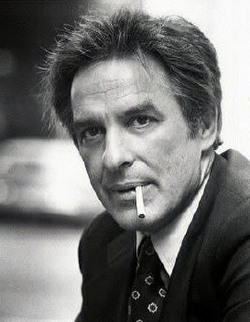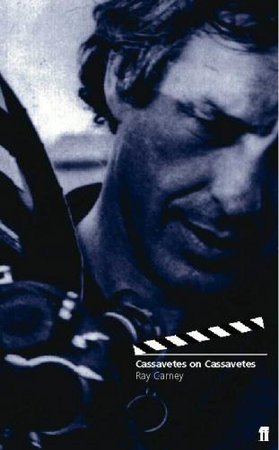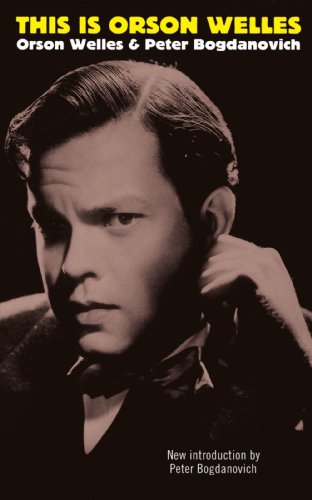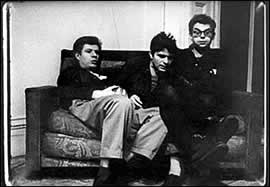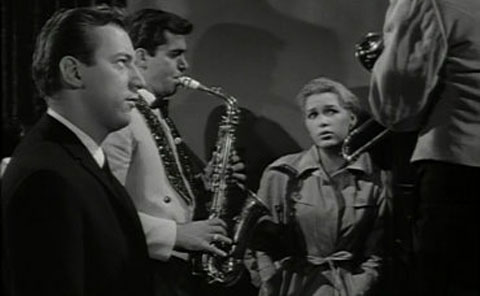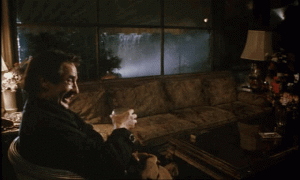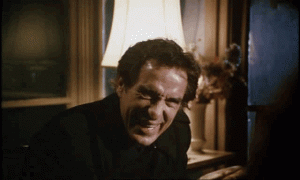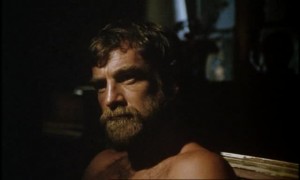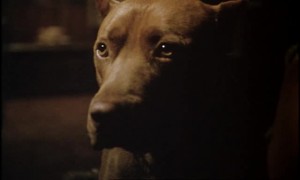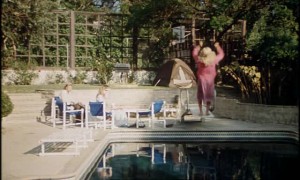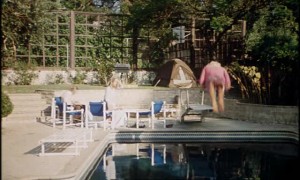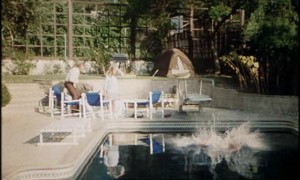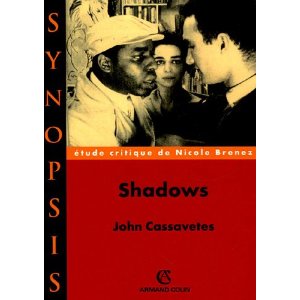From Cineaste (December 2001).
For a long time, I hesitated about reprinting this, but learning about Ray Carney’s unspeakable treatment of filmmaker Mark Rappaport (as detailed here) eliminated my compunctions.
For more about Rappaport’s work, here are three of the many links on this site:
http://www.jonathanrosenbaum.net/2014/05/40758/
http://www.jonathanrosenbaum.net/2018/05/mark-rappaport-2/
http://www.jonathanrosenbaum.net/2015/04/recommnded-viewing-mark-rappaports-i-dalio/
— J.R.
Cassavetes on Cassavetes
Edited by Ray Carney. London and New York: Faber and Faber, 2001. 526 pp., illus. Paperback: $25.00.
The Films of John Cassavetes: Pragmatism, Modernism, and the Movies
by Ray Carney. Cambridge, New York and Melbourne: Cambridge University Press, 1994. 322 pp., illus. Paperback: $24.95.
John Cassavetes: The Adventure of Insecurity
by Ray Carney. Second Edition. Walpole, MA: Company C Publishing, 2000. 64 pp., illus. Paperback: $15.00.
Shadows
by Ray Carney. London: British Film Institute (BFI Film Classics), 2001. 87 pp., illus. Paperback: $12.95.
John Cassavetes: Lifeworks
by Tom Charity. London, New York and Victoria: Omnibus Press, 2001. 257 pp., illus. Paperback: $19.95.
As nearly as I can remember, I had two opportunities to meet John Cassavetes in the flesh, both times in New York, and I deliberately passed on both of them. Shortly after Faces came out in the mid-Sixties, a friend from my home town in Alabama who worshipped that film even more than I did — Shadows was still my own favorite then — came to town and found a way of contacting and then going to meet his idol, who was preparing Husbands at the time; he invited me to come along, and I declined. Then, years later, at a Cassavetes retrospective at the Museum of Modern Art in 1980, I was invited to a reception for him, which I attended, but my companion and I spent much of our time at this event chatting with Gena Rowlands, and none with the guest of honor.
I knew why I didn’t want to meet him even then: because he was anti-intellectual and a macho bully. That much was apparent from the so-called “intellectual party” depicted in Shadows — a scene that offended me as much in 1961, when I was eighteen, as it does today — and the frequent boorishness of his characters, as well as the blustering semicoherence of his interviews, and it is certainly borne out on page after page of the invaluable Cassavetes on Cassavetes. (“I could see the flaws in Shadows myself,” he characteristically noted of the film’s first version; “it was a totally intellectual film — and therefore less than human.”)
Much as I cherished (and cherish) most of Cassavetes’s work as a director, a reasonable conversation with him seemed highly unlikely. Maybe I was wrong, but having emotionally exposed myself in what I’d just written and published about his work prior to my second opportunity to meet him (see “The Tyranny of Sensitivity” in my collection Placing Movies), I was both shy and somewhat fearful about putting myself on the line in person. Furthermore, all the accounts I’ve read of Cassavetes’s encounters with the late Pauline Kael — his (in Cassavetes on Cassavetes) as well as hers (in interviews and in her introduction to For Keeps) — persuade me that I was probably right. Some of what she had to say about his work was thoughtful, and some of it was insensitive; much of it was pejorative, and a certain amount was possibly damaging to his career. But none of this in my opinion justified his stealing her coat on one occasion, tossing her shoes out of a car window on another, and physically threatening her on a third. Ray Carney as editor and commentator conveys the first two of these incidents in Cassavetes on Cassavetes, but he’s less forthcoming about what he thinks of this behavior than he is about Kael’s shortcomings as a reviewer of Cassavetes films.
I haven’t met Carney either, though I’ve had several personal exchanges with him over the years. I wouldn’t term him anti-intellectual, macho, or a bully; on the contrary, judging from what some of his former students say on his behalf, he appears to be an energizing and inspiring teacher. He has also been an invaluable drum-beater and proselytizer who has stood up for not only Cassavetes, but also countless other American filmmakers of distinction whom most of his colleagues have studiously ignored, such as Charles Burnett, Shirley Clarke, Jon Jost, Robert Kramer, Barbara Loden, Elaine May, and Mark Rappaport. (His record as a supporter of neglected contemporary non-American filmmakers, as general editor of the Cambridge Film Classics, is more mixed.) In Cassavetes on Cassavetes, moreover, he has the intellectual honesty to report on some of his hero’s worst character traits — including his often shameless exploitation of coworkers, his many deceptions, and his often poor business judgements — as well as his more heroic qualities. On the other hand, there are elements of obsessiveness, clumsiness, provincialism, overeagerness, giddiness, and sometimes outright intolerance that Carney might be said to share with his idol, for better and for worse. He’s a critic prone to use a word like “passionateness” when “passion” might do just as well — a trait that testifies to his own passion more than his lucidity or sense of balance.
“There ought to be more books about John Cassavetes,” Tom Charity aptly notes at both the beginning and end of his introduction to John Cassavetes: Lifeworks, the first critical biography of Cassavetes we have. If he’d been more precise and less tactful, he might have written, “There ought to be more books about John Cassavetes in English that aren’t by Ray Carney.” There are already several books about Cassavetes in French, for instance, at least two of which are extremely valuable both as criticism and as research (1), though Charity — an English film critic for London’s Time Out — is the first to have broken through what might be termed the Carney gridlock in Cassavetes’s native language: at last count, five books on Cassavetes, all by one writer.
Carney himself isn’t necessarily the one to blame for this. Although one assumes he’d be the likeliest outside reader for any academic publisher soliciting the opinion of a Cassavetes expert on a proposed Cassavetes book, I have no way of knowing how many of these reader reports Carney might have written or how sympathetic or unsympathetic he might have been. All I know is that a lot of critics writing in English love Cassavetes — despite the factors that kept him controversial while he was alive — yet so far only one American has managed to publish critical books about him.
In fact, Charity shows a lot of gratitude and indebtedness to Carney throughout his book, as well he should; Carney clearly continues to be Cassavetes’s most tireless and enthusiastic champion, as well as our main source of information about the filmmaker in any language. His identification with Cassavetes has in fact become so total that one accesses Carney’s website — which directs one in turn to his published work — by typing Cassavetes’s name. This has led in Carney’s writing to a division of much of the film world into heroes and villains predicated on who has supported or thwarted Cassavetes’s efforts — a division that discourages some of the more complex evaluations one associates with serious criticism. In fact, there are times when one winds up regarding Carney more as a crusader and a missionary than as a critic or scholar. This isn’t to say that there aren’t times when we may need crusaders and propagandists more than we need critics or scholars. But surely we’re in trouble if we can’t make room for all of them.
There have been many marked improvements from Carney’s first book on Cassavetes (American Dreaming: The Films of John Cassavetes and the American Experience, 1985 — a relatively indigestible study that I no longer own) to his second, The Films of John Cassavetes: Pragmatism, Modernism, and the Movies, nine years later. And there are also substantial gains between that book and the more recent ones — culminating in Cassavetes on Cassavetes, a 526-page compendium of statements drawn from interviews and accompanied by Carney’s detailed commentaries, that is far and away his most valuable Cassavetes book to date, and almost certainly the most useful compendium of information about Cassavetes that we now have in any language. But the fact remains that no critical monopoly can ever be healthy, no matter how conscientious, thoughtful, or thorough the monopolist. Moreover, the policy of Cassavetes’s family to discourage biographers, which Charity notes — motivated in part, I would guess, by an understandable desire to avoid the messy details that would emerge from the life of a heavy drinker and carouser — has only compounded the problem.
Having worked for several years on editing Orson Welles and Peter Bogdanovich’s This is Orson Welles — an interview book that is in some respects comparable to Cassavetes on Cassavetes in length, scope, and ambition — I can appreciate the sort of challenges as well as obstacles Carney has had to face, even if he has sometimes dealt with them in a quite different manner. That Welles was far more articulate than Cassavetes and that I was mainly working with one interviewer rather than a slew of them no doubt helps to account for some of these differences. Probably the most radical distinctions between our approaches is that Carney structures his book chronologically while combining various statements made by Cassavetes at different times to different interviewers on the same subject, a procedure he describes in his Introduction. As he puts it, this “was the only way to allow him to make a coherent presentation of his complete thought, as well as the only way to keep the narrative moving meaningfully from year to year and topic to topic without constant thematic digressions, asides and interruptions.”
What does Carney mean, exactly, by Cassavetes’s “complete thought”? I know that if I’d ever postulated Welles having had such a thing at any point in his career — much less across his career as a whole — I would have fostered a great deal of distortion regarding his capacity and propensity for change and development. But I hasten to add that the relative diversity and size of Welles’s career as well as what might be termed his intellectual development clearly make him less suitable for Carney’s kind of treatment. I also suspect that Cassavetes’s frequent approximations or obfuscations about what he was doing, which generally surpass those of Welles, cries out for the hand of a sympathetic yet knowledgeable editor, and in this respect he has been (posthumously) fortunate in receiving the patient care and attention of someone like Carney.
But Carney’s position as the ultimate arbiter of many factual aspects of Cassavetes’s career becomes troubling once one realizes that, like virtually every other scholar, he is fallible. To turn to one of the few Cassavetes-related areas where I feel more qualified than him — Cassavetes’s stage production in Los Angeles of his last play, A Woman of Mystery (apparently, his last fully realized creative work), in May 1987, which I attended and Carney didn’t — there are at least a couple of errors in his half-page account, and an issue about his editing of Cassavetes’s program notes that should at least be mentioned.
With the exception of Judith Malina’s production with The Living Theater of Jack Gelber’s The Connection, which I saw three times in New York in the early Sixties, this is the greatest American stage production I’ve ever seen, and its central focus — Gena Rowlands as a homeless bag lady — as well as its treatment help to make it, for me, an apotheosis of Cassavetes’s work, worthy of standing alongside Love Streams, his last and possibly greatest film. (He certainly had a hand in the problematic Big Trouble, which came afterwards, but I’m reluctant to call that part of his oeuvre in the same sense.) Unfortunately, according to Tom Charity — who also devotes about half a page to the production, quoting from my brief account of it in Placing Movies (and not making any errors that I’m aware of in his other details) — there were only “a dozen or so performances,” so accounts of this remarkable event are bound to be scarce. (Bill Krohn, the L.A. correspondent for Cahiers du cinéma, attended another one of those performances.) Why there has apparently been no move on the part of Cassavetes’s family to publish this play is beyond my comprehension, so I can only voice my conviction that if and when this happens, the public’s sense of the size and meaning of Cassavetes’s work will expand.
Carney lists Charles Durning as one of the actors in this production — a fact contradicted by both my memory and the play’s program, which I’ve saved — and notes in passing that “the work played to standing-room only audiences every night,” which is also untrue insofar as standing-room audiences weren’t permitted in the small auditorium. (I know this because I asked; I recall getting in only because someone else with a ticket failed to turn up at the last moment.) This is probably an error stemming from Carney’s approximate way with English, comparable to what leads him to a term like “passionateness” and such a formulation as “Cassavetes’s complete thought.” As for his editing of Cassavetes’s program notes, apart from collapsing all the separate paragraphs into one, this omits most of the details relating to the play’s story (which Charity is more attentive to), presumably because Carney is more interested here in “Cassavetes’s complete thought” than in the particularities of his story construction. Personally I would differ with this strategy, believing that the best route into Cassavetes’s thought (“complete” or otherwise) is through such particularities and not merely through his generalities — which is what Carney prefers to retain.
Speaking of English, it’s symptomatic of the problems that American enthusiasts of Cassavetes face that many of them don’t realize the full extent of his international reputation and all that this implies. For instance, Sohrab Shahid Saless, one of the leading pioneers of the Iranian New Wave — who made most of his films in Germany, but died in Chicago in 1998, in exile from both Iran and Europe — cited him as one of his favorite filmmakers shortly before he died, and he is far from being an isolated case. Yet it’s sometimes erroneously assumed by Americans that Cassavetes was himself so quintessentially American that non- Americans couldn’t possibly understand him in any detail. Carney himself approaches this position at times, especially when he dismisses French criticism of Cassavetes in toto (without bothering to cite any names) for not being more attuned to Cassavetes’s verbal nuances.
But as Adrian Martin has recently demonstrated in his introduction to the Cassavetes dossier of the excellent online Melborne-based film magazine Senses of Cinema (2) — an essay that is the most convincing as well as most useful piece of Cassavetes criticism in English that I know, both as a critical summary and as a broaching of the formal issues that Carney usually avoids — this is a groundless charge, and all the more questionable insofar as Carney himself appears not to have much reading knowledge of French. (The copious acknowledgements of Cassavetes on Cassavetes cite four people who provided “translations of French-language biographical information.”) Bearing all this in mind, it’s worth emphasizing that one of the most valuable aspects of John Cassavetes: Lifeworks is its inclusion of extended statements about Cassavetes by eight other directors from five countries, which Charity had the foresight to commission — Pedro Almodovar, Olivier Assayas, Peter Bogdanovich, Jim Jarmusch, Jeremy Paul Kagan, Gary Oldman, Nicolas Winding Refn, and John Sayles.
Carney as editor of Cassavetes’s accounts of himself and Carney as a critic of Cassavetes are obviously not the same thing, and sometimes the differences are telling. In his recent monograph on Shadows, his frequent tendency to demonize most alternatives to Cassavetes compels him to smear Robert Frank and Alfred Leslie’s Pull My Daisy as a way of trying to build up the second version of Shadows — which surely doesn’t need such any special pleading, even if the two films premiered together: “While Shadows uses figures like Leila and Ben to interrogate the adequacy of Beat stances and claims of freedom, Pull My Daisy smugly, self-satisfyingly wallows in them…Shadows is the rarest of works from that period — a film that analyzes the fraudulence of Beat posturing…” This latter claim can only mean that Carney hasn’t seen Albert Zugsmith’s cheesy Hollywood exploitation release of the same year entitled The Beat Generation, which “analyzes the fraudulence of Beat posturing” until the cows come home, to no discernible benefit to anyone. The combined hyperbole and imprecision inherent in the assumption that “Beat posturing” in the late Fifties and early Sixties mainly went unchallenged and unanalyzed apart from Cassavetes’s brave initiative is sadly typical of much of Carney’s prose and thinking in general. Does he honestly think that mainstream culture was applauding or coddling the so-called Beats at the time?
Personally, I can’t see what’s so fraudulent about Jack Kerouac’s sweet and funny narration of Pull My Daisy — or the adolescent horsing around of Ginsberg, Orlovsky, and Corso in the same film, regardless of whether one finds it funny or not. But since ‘Beat’ is a packaging term dreamed up by and for institutions like the Luce publications, I can’t quite figure out what “Beat posturing” is supposed to mean, either. If memory serves, Cassavetes rattles on in one documentary about what an asshole Socrates must have been, but whether this remark qualifies as “Beat posturing,” glib provocation, or just plain yahoo stupidity is a question I’d prefer to leave open. Personally I find it as offensive as anything Carney objects to in Pull My Daisy — and ultimately just as irrelevant to the issue of what made Cassavetes a great filmmaker.
Moreover, Carney’s frequent gibes against Orson Welles in general and Citizen Kane in particular as a way of building up Cassavetes — quite apart from going against the grain of Cassavetes’s support of both (which Carney is obviously entitled to do) — often confuses popular misreadings of Welles with Welles himself. When, for instance, he argues in his book on Shadows that “the goal of most directors, particularly virtuosic ones like Sternberg, Welles, Hitchcock, and Kubrick, is to impose their vision on their works, so that each shot, scene and interaction bears their imprint,” he may be accurately describing the effect of Welles’s films, but he isn’t accurately describing Welles’s professed intentions — which were much closer to Cassavetes’s emphasis on actors than he assumes, and which furthermore were closer to a desire to confound popular notions about his style than to a desire to satisfy and confirm them. (It’s hardly surprising that Cassavetes and Welles were friends.)
For me what’s been most frustrating about Carney’s writing in the past has been his reluctance or inability to make certain kinds of information more available: the major differences between the two edits of The Killing of a Chinese Bookie, for instance, and how these came about. Maybe my habit of combing his previous books for detailed edification on such matters and usually coming up close to empty is what’s responsible for my frustration. Such information is the first thing scholars should be making accessible and, at least until recently, often the last things Carney has appeared to have had in mind; and even though Cassavetes on Cassavetes shows a considerable advance on this front, its usefulness is severely compromised by the absence of an index and an almost total lack of clarity about which statements by Cassavetes come from which sources — setting up obstacles to other researchers that are so formidable that he effectively seems to be staking a territorial claim and announcing ‘No Trespassing’ to other scholars. (3)
In his Shadows monograph, he manages to give us a lot of new information about that film — largely through elaborate detective work regarding when and where various scenes were shot — although this isn’t always conveyed gracefully or in a user-friendly manner (which Nicole Brenez in her own book on the film was able to pull off while working with fewer research materials at her disposal, depending more often on deductive reasoning). Typically, he silently corrects his own error in John Cassavetes: The Adventure of Insecurity of attributing all the newer scenes for the second and longer version of Shadows to Cassavetes alone rather than to Cassavetes in collaboration with Robert Alan Aurthur, whose role in writing the dialogue he has more recently uncovered.
Ideally, critics should know both what factual information about their subjects is most relevant and why. Charity at times seems to have a better handle on the former than Carney does (who tends to be better on the ‘why’ part), but he doesn’t always know how to make the best use of what he finds. As a critic, there are times when Cassavetes’s eccentricities simply become too much for him — a common and forgivable failing — such as when he remarks, “To the extent that Shadows was an act of rebellion against the Hollywood system, Too Late Blues represents an uneasy capitulation.” This is virtually identical to the conclusion reached by Dwight Macdonald when the second film came out, and while it’s an understandable position, I think it’s wrong. As Carney shows in some detail in his book on Shadows, the second version of that film — the only one available in over forty years — is much closer to Hollywood production norms, in terms of both scripted dialogue and shooting on sets, than has generally been assumed, thanks in part to Cassavetes’s obfuscations in interviews. On the other hand, the flawed yet unjustly underrated Too Late Blues, in spite of its freakish adoption of even more Hollywood production norms, is largely a film about the profound and irreparable costs of selling out, so it hardly makes sense simply to identify it with the capitulation it’s so deeply and seriously concerned with.
On the other hand, Charity is at his most invaluable concerning a dog in Love Streams — a dog named Jim that bewilderingly turns briefly into a bearded and barechested young man in the final scene, provoking an amused query from Robert (Cassavetes), “Who the fuck are you?” Perhaps the most irrational of all the film’s fantasy eruptions, it actually turns out to have a rational or at least practical basis, as we discover from Cassavetes associate Bo Harwood, whom Charity quotes at some length: Neil Bell, the barechested young man, is a mime who actually played a dog in the (apparently) very different stage play by Ted Allan, also directed by Cassavetes, that the film was derived from — initially inside a dog suit, and later (at Cassavetes’s request) without one. Cassavetes insisted on keeping Bell on the film’s payroll long before he figured out how he could use him — until he got to the final scene, when he decided to use Bell only momentarily, and without the dog suit. (The film was basically shot in sequence. ) Charity, like everyone else, is understandably bewildered by Bell’s appearance in the film, yet surely this is yet another telling example of Cassavetes’s existential method whereby existence precedes essence and presence becomes meaning: the fact that Bell was around essentially led to Cassavetes using him. As Charity cites him telling an interviewer much earlier in the book, Shadows “just became a way of life where you get close to people,” and I would argue that his last and greatest feature — one of the most beautiful of all film testaments — derives from precisely the same impulse.
Indeed, the most moving anecdote about the way Cassavetes worked that I’ve encountered, versions of which are included in both Charity’s book and Cassavetes on Cassavetes, I originally heard from Peter Bogdanovich, whom it directly concerns. After the murder of Dorothy Stratten, when Peter suffered a nervous collapse followed by a period of reclusiveness, Cassavetes lured him out of his house by insisting that he desperately needed him to direct a segment of Love Streams. Eventually Peter agreed, after a great deal of browbeating, and the sequence he directed is now part of the film. Only later did he come to realize that the whole thing was a ruse to get him back on his feet again. That Cassavetes — who knew at the time that because of his own physical condition, Love Streams would be his last feature — was so focused in what he was doing that he could invite a friend to direct a portion of his most personal feature, says more to me about his filmmaking than any number of critical studies. It explodes the auteur theory just as surely as Bell’s sudden appearance as the dog defies logic, and possibly for the same reasons. For me it defines the mystery and beauty at the heart of his cinema, which all these books, for better and for worse — and hopefully many more to come, by several authors — will help us to understand. “Who the fuck are you?,” indeed.
Notes
(1.) Especially Shadows by Nicole Brenez, Paris: Editions Nathan (Collection Synopsis), 1995, 128 pp., illus.; but also John Cassavetes by Thierry Jousse, Paris: Editions de I’Etoile/Cahiers do Cinéma, 1989, 159 pp., illus.
(2.) www.sensesofcinema.com (see September-October 2001 issue). A shorter version of the same essay can be found in the September 2001 issue of the Canadian magazine Cinema Scope.
(3.) In his most maddening book, Speaking the Language of Desire: The Films of Carl Dreyer (Cambridge University Press, 1989) — a book whose title is already a misnomer, because its focus is basically restricted to three films — Carney devotes a lot of space to attacking David Bordwell’s much more comprehensive and groundbreaking book about Dreyer and only one extended footnote to Maurice Drouzy’s even more factually illuminating biography — sadly available only in French and Danish — which he brings up only to dismiss, after inadequately summarizing its contents. Moreover, his dismissal of a biographical reading of Dreyer’s work suggests a double standard when it comes to analyzing foreign filmmakers versus American ones: he proudly introduces his Cassavetes on Cassavetes as “the autobiography John Cassavetes never lived to write,” but Dreyer’s life — which I find far more interesting and relevant than anything Carney can find to to say about his films, particularly when it comes to his illegitimate birth (which Drouzy explores in detail) — presumably remains beneath his and our interest.

